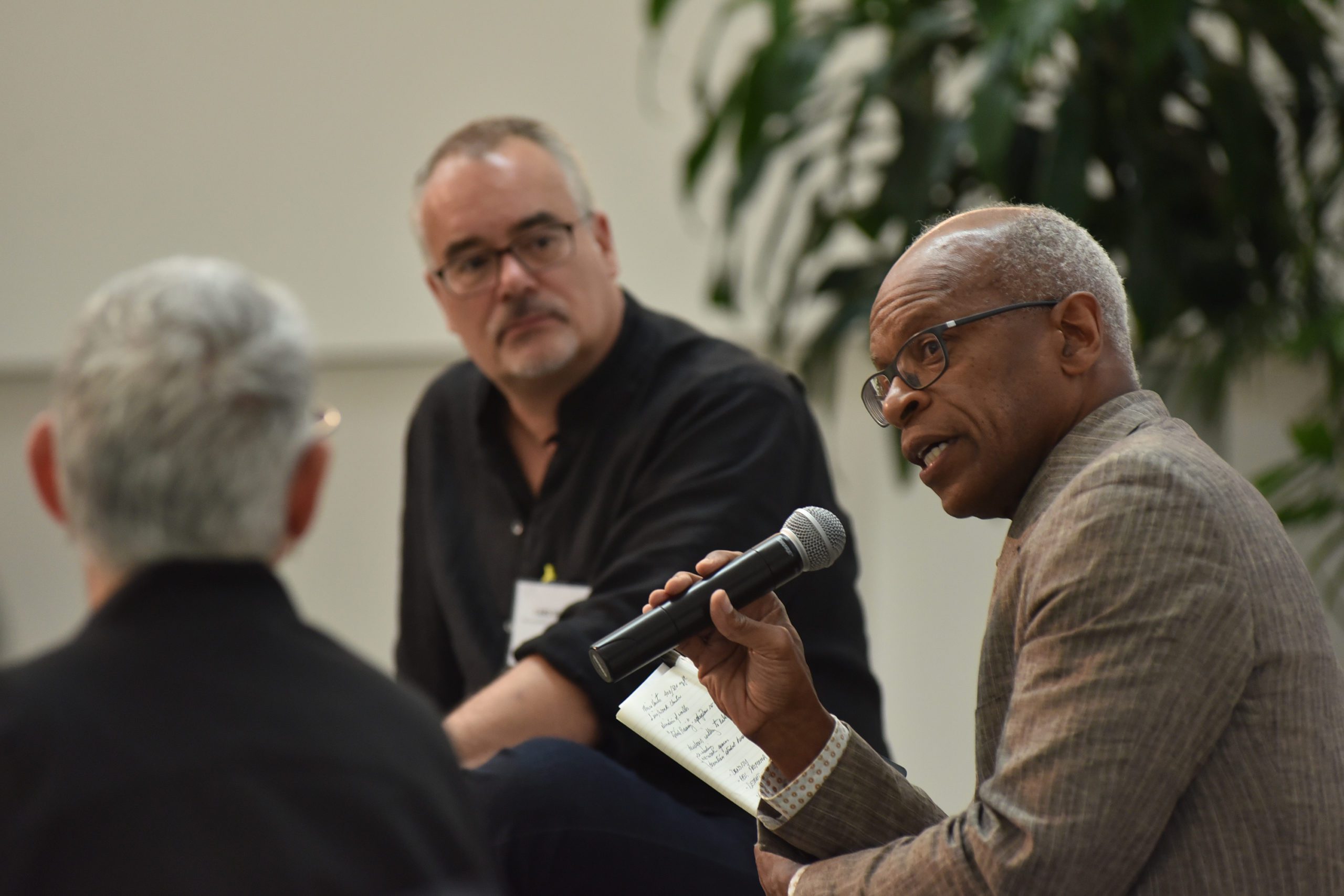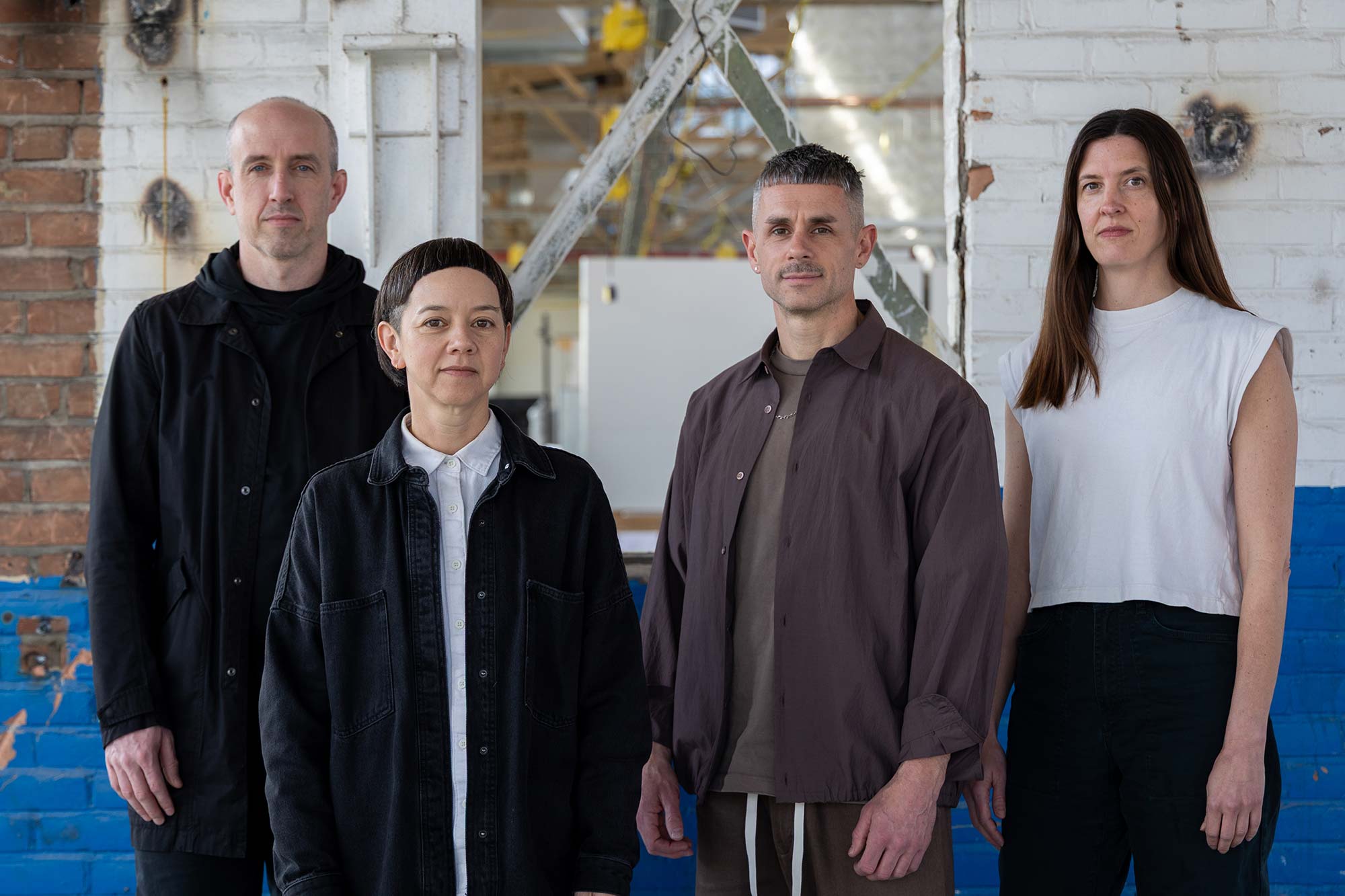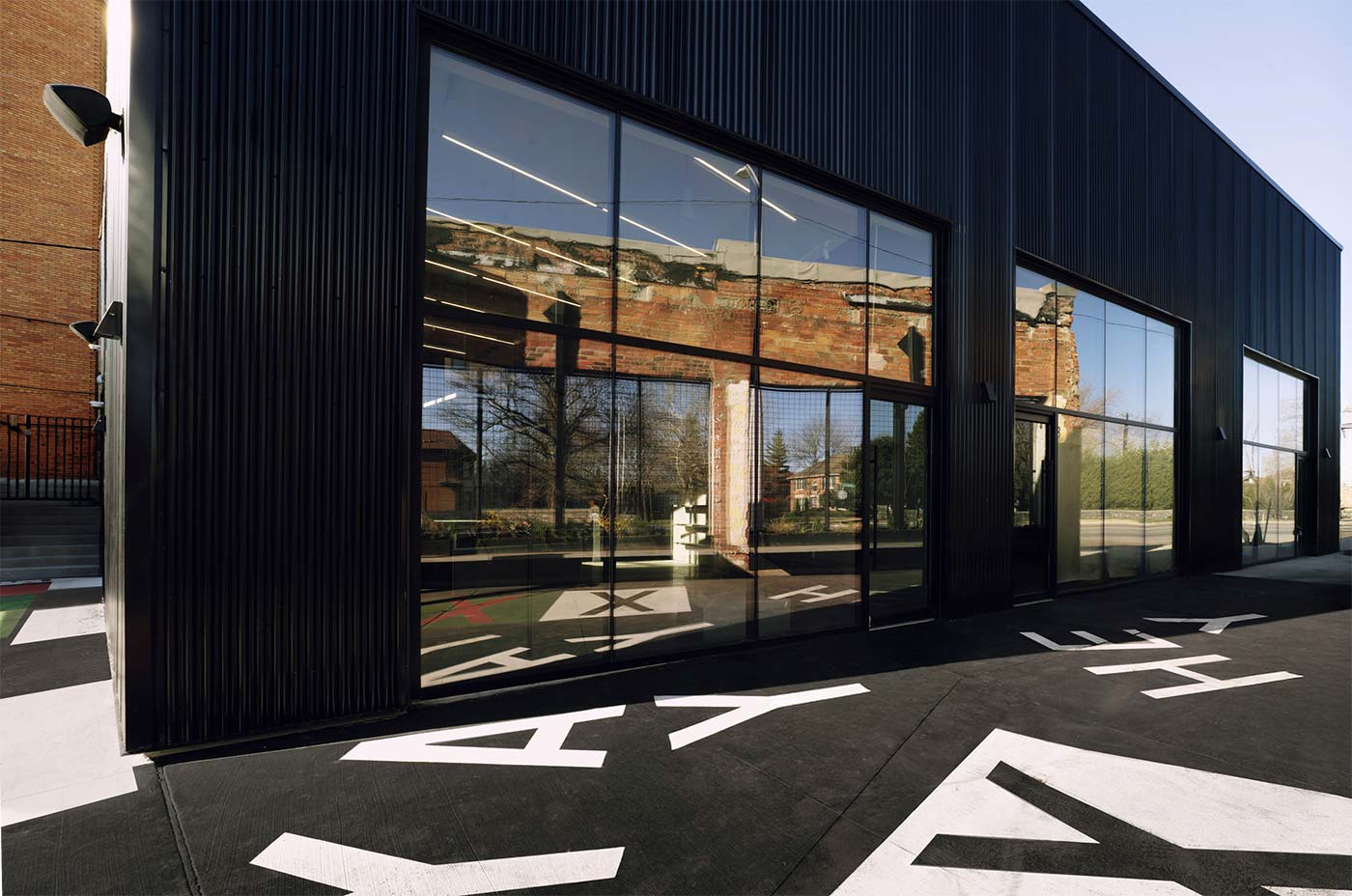
Re: Housing: Detroit Explores the “Missing Middle”
Detroit was developed on a low-density, single-family housing model; however, many studies show that medium-density housing offers the greatest opportunities for efficiencies in construction, sustainability, collective living, and the accommodation of new domestic structures.
This issue and the possibilities for medium density housing in Detroit, which informs the work of Taubman College’s Systems Studio for Master of architecture students, also was a central theme of the college’s recent Re: Housing: Detroit symposium.
Re: Housing: Detroit, which kicked off with a keynote address by architect Paul Karakusevic in Detroit and continued the following day with panel discussions in Ann Arbor, brought together architects, planners, geographers, policy experts, and developers to explore solutions to Detroit’s “missing middle” density housing. The symposium and the Systems Studio are part of a five-year collaboration between the college and the City of Detroit Planning and Development Department.
“How can Detroit have a housing crisis?” Sharon Haar, a professor of architecture at Taubman College and the symposium’s organizer, asked during her opening remarks. “The seeming abundance of land and available single-family housing suggest that housing is a mere question of filling in the gaps and rehabilitating what already exists. If only it were that easy.”
She noted that low property values, aging, and poor-quality housing stock, unsustainable patterns of development, limited commercial options, and almost complete reliance on the automobile require new thinking to create a more sustainable and equitable Detroit. “To be truly impactful, the renaissance of downtown Detroit must extend along its commercial corridors. Development needs to be reconnected to a living infrastructure.”
Under the leadership of Maurice Cox as Detroit’s planning director, the city has imagined a multipronged approach that “focuses on the people who have stayed and is committed to respecting their voices,” Cox told the audience. He said the vision begins with the idea of the 20-minute neighborhood, where residents can meet 80 percent of their daily needs within a 20-minute walking radius. While the city is focused on rehabbing where possible, the model he described requires a density of housing, commercial space, and other services to work, and that requires a new building.
“We are thinking about the revitalization of Detroit one neighborhood at a time,” Cox said.
To think about the complexities of the housing issue in Detroit, the symposium brought together practitioners from cities including Los Angeles, New York, New Orleans, and Hong Kong to discuss housing pitfalls and successes in their work and in their cities.
The first panel discussed how the introduction of medium-density housing and the rebuilding of commercial corridors in other cities might inform the development of accessible and affordable housing nationwide.
“The notion of the “Missing Middle” grew from the Great Recession suburban hangover,” said Matthew Lasner, an associate professor of urban studies and planning at Hunter College. “It speaks to the fundamental mismatch between housing production and the nation’s evolving needs.” To address concerns about equity and affordability, given current affordable housing methods, “we must look beyond amending land-use regulations to also reinvigorate the tradition of building planned low-rise, medium-density, mixed-type communities in cities.”
Rasmia Kirmani-Frye, an independent consultant who previously was director of public-private partnerships for the New York City Housing Authority (NYCHA), said the notion of density goes deeper than the number of people living in a space; it’s about their connection to resources and networks, and a weak connection exacerbates isolation: “We need density of support, not just infrastructure.” As infrastructure ages and federal subsidies are declining, she questioned if the value of NYCHA’s real estate portfolio can be a catalyst for reimagining a new model of low- and moderate-income housing. “Increasing density presents an opportunity to create income generation through new planning and design interventions, but it begs the question, who is the increased density for? Is this pretext for gentrification and privatization, or an opportunity for resident-led decision making and design solutions that could result in public housing residents re-inhabiting their own city?”
Panelists next shared their perspectives on how architects can work with planners and policy experts to simultaneously inform zoning legislation, building codes, and the general public toward the redesign of cities to meet 21st century needs around changing the family structure, transportation, and climate change. The bottom line? It’s complicated.
“Homeless populations are surging in Los Angeles and voters have approved several measures to tackle this problem. Unfortunately, even with all of this good policy, two glaring impediments still exist: an overall lack of affordable housing and a political structure that favors the singular over the needs of the many,” said Angie Brooks, managing principal at Brooks + Scarpa and co-founder of Livable Places Inc. “The lack of supply is a direct result of the lack of comprehensive zoning reform throughout the city and the county.” Her firm recently partnered with a modular prefab home builder and a nonprofit developer of affordable housing on a $1 million grant to develop the NEST Toolkit — prefab housing for previously homeless residents.
Marc Norman, the founder of Ideas and Action and an associate professor of practice at Taubman College, noted that there was a time when the United States wasn’t in a perpetual housing affordability crisis: the 1950s, when government programs and the post-war boom accelerated the growth of suburbs. Citing the billions in incentives that flow toward affluent single-family homeowners, he noted, “Today, there remains a lot of subsidy for housing that we don’t think is subsidized.”
Norman, who also serves on the Federal Reserve Board’s Community Advisory Council, talked about how banks, foundations, impact investors, cities, and corporations can come together to make housing more affordable and combat income disparities. “One way to formulate ideas for scaling up housing production is by defining the problem, defining the partners and their roles, creating a structure for that partnership, having clearly defined outcomes, and then setting up the framework for getting deals done.” He pointed out that the traditional way that lenders determine the value and whether to lend is on appreciation, surrounding comparables, and homebuyer incomes, which is a problem in precarious neighborhoods. “What if we valued the social impact of housing instead of just the traditional model of economic value?” he asked.
The final panel discussed how urban housing supports the new family and community structures, and the impacts of identity, labor, digital technologies, and changing social structures on domestic environments. As part of the panel, Ignacio Galán, an assistant professor at Barnard + Columbia and principal of [igg – office for architecture], discussed his work with the After Belonging Agency, in which he has researched how housing in Northern Europe has been influenced by an influx of migrants. “The goal of these projects is to expose the challenges that housing faces in today’s increasingly transient world, as they explore the critical question, who is my neighbor?” He highlighted a center for asylum seekers in Oslo and a collective housing project in Hamburg as examples of how the architectures of housing participate in shaping new forms of being together, how they define diverse forms of attachment to places and collectivities, and how they articulate new constructions of belonging. “Spaces of residence are being transformed by flows of circulation bringing greater accessibility to ever-new commodities and further geographies. But those same circulatory processes also promote growing inequalities for large groups, kept in precarious transit,” he said.
While the globality of the symposium’s presenters highlighted the breadth of challenges and opportunities for Detroit, Haar noted that the city’s commitment to experimentation — and the strength of Taubman College’s engagement — help to ensure that conversations and action will continue. “Both Maurice [Cox] and I hope that the work being undertaken today by for-profit and nonprofit developers, community activists, and the city; the research and speculative work of our students at Taubman College; and the contribution of today’s speakers will seed future conversations and publications that offer a new way of thinking about medium-density, missing-middle housing in Detroit and elsewhere.”
“It has been an extraordinary partnership that has made an incredible impact,” agreed Cox, who noted that although he soon will begin a new job as commissioner for planning and development for the City of Chicago, a recently signed memorandum of understanding ensures that the partnership will continue. “I am proud of how we’ve pushed the conversation on the public realm.”
Re: Housing: Detroit was co-sponsored by the University of Michigan Urban Collaboratory, the Graham Foundation, and the University of Michigan Poverty Solutions Initiative.









